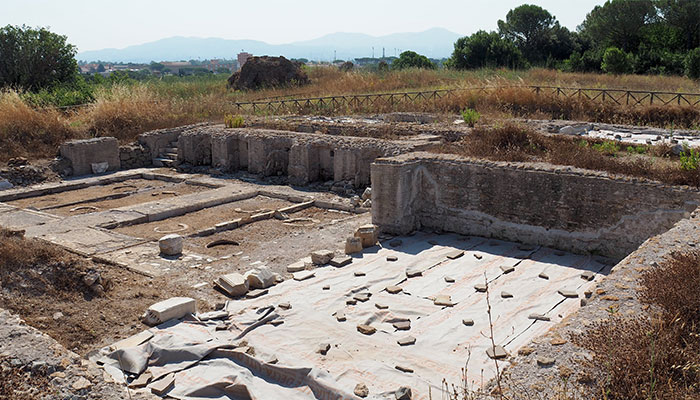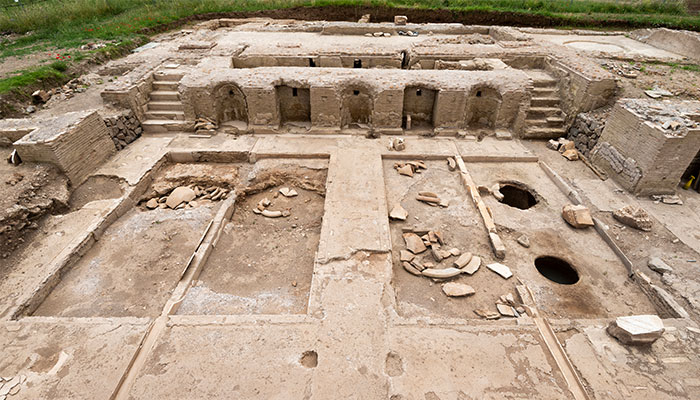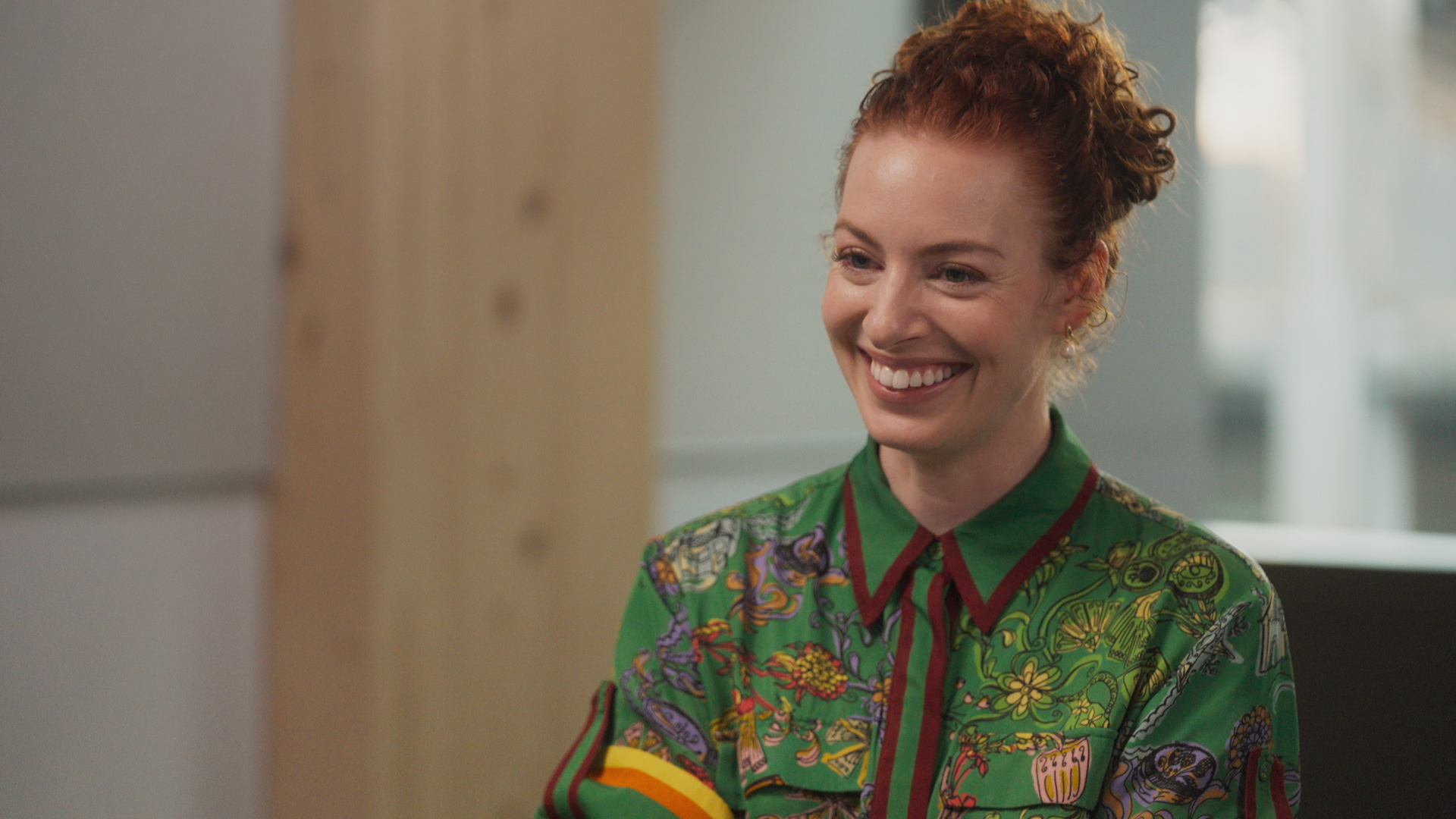The discovery of an ancient Roman winery sheds new light on the showbiz-like relationship between winemaking and the glory of emperors.

At the Villa of the Quintilii, a third-century AD imperial residence outside Rome on the Via Appia Antica, archaeologists have unearthed a complex of rooms that has little competition in the ancient world.
Its features are typical of a Roman winery: a grape-treading area; two presses; a vat for the collection and settling of grape must (the freshly crushed fruit juice); and a system of channels connecting these features to a wine cellar designed like an orchestra pit with sunken storage jars.
The decoration and layout, however, up the ante in terms of luxury, ostentation and imperial one-upmanship.
Excavations suggests that surfaces in the winery comprised coloured, decorative marble, motifs and tiles. Fountains of wine lined the pathway to the cellars. Grand dining and tasting rooms surrounded a marble-clad performance space that allowed the emperor and his retinue to be entertained by the spectacle of the annual vintage.
Agricultural production—and winemaking in particular—played a key role in the construction of elite Roman identity.
When in use, brightly coloured grape must ran through thin white marble channels, drawing the audience’s eye up to the elevated treading areas and the fountains from which freshly trodden juice flowed.
Along with much squelching, the soundtrack to the treading was one of workmen joking, laughing, grunting, together with music that helped ease the fatigue of the task - rhythmic songs accompanied by flutes.
The vintage was a truly theatrical occasion, one that illuminates the link between the imperial household and the agricultural world.
As Emlyn Dodd, Giuliana Galli and Riccardo Frontoni write in a paper published this week in Antiquity, “The spectacle of production: a Roman imperial winery at the Villa of the Quintilii, Rome”, the winery is only the second known example from the Graeco-Roman world of an opulent wine production complex built to facilitate viticultural ‘spectacle’. (The other is Villa Magna, 50km to the south-east, near Anagni.)

Expert: Dr Emlyn Dodd, pictured, is an archaeologist specialising in the study of ancient food and drink, agriculture, technology and trade.
Viniculture (the science of wine production, a subset of viticulture), and agriculture more broadly, was central to elite cultural identity in many ancient Mediterranean societies.
As early as the third millennium BC, for example, the Egyptians depicted scenes of wine production in tomb paintings, while vinicultural origin myths were part of Persian culture. Later, the Roman elite became fascinated by the theatre of wine production.
Says Dodd, “Agricultural production—and winemaking in particular—played a key role in the construction of elite Roman identity. Wealthy Romans cultivated a luxurious notion of rusticity, romanticising the role of the rural worker and celebrating the landowner as commander of nature.
“They created spaces where production was displayed, observed, flaunted and appreciated.”
Artefacts and agri-ambition
In ancient literature, farming is presented in agricultural treatises as an allegory for the upkeep of the state, one that has important ideological and political dimensions.
Research is slowly recognising that Gordian III (r. 238 to 244) began a program of monumental construction and restoration focused on infrastructure and spectacle — the Colosseum, baths and fountains — and now we know also an extravagant winery in the suburbs of Rome.
The Villa of the Quintilii, now a publicly accessible archaeological site and museum, has intrigued archaeologists since the 15th Century.
More than 600 mostly sculptural artefacts were recovered by Pope Pius VI (r. 1775-1799) from the garden and nymphaeum areas and from the front of the platform upon which the villa was built.
Systematic excavations began following the purchase of the property by the Torlonia family in 1797. Occupation of the site dates back to at least the Republican period (509 BCE - 27 BCE), but the first construction of a bigger villa complex is dated by brick stamps to AD 125. Discovered in 1828 or 1829 was a water pipe naming the owners as Quintilii, a reference to the brothers, Sextus Quintilius Condianus and Maximus, who served as consuls of Rome in AD 151.
Commodus had the Quintilii killed in AD 182/183 for plotting against him and took possession of their properties. Commodus and other emperors after him lived in the sumptuous villa. Directly south of Rome, it was more visible, convenient and accessible for a mobile emperor with a large, armed retinue.
Banquet with floor show
The first evidence for the winery came during excavations in 2017 and 2018, conducted by a team that included Giuliana Galli and Riccardo Frontoni in collaboration with the Via Appia Antica Archaeological Park and Italian Ministry of Culture, dating certain structures to the reign of Commodus (r. AD 177–192).

Lavish detail: View of the winery from the north west with the vineyard storeroom (cella vinaria) in the foreground. Photo by S. Castellani.
The winery was partially constructed over a demolished private chariot racing track built by Commodus. Its cellar is surrounded on three sides by rooms that appear to be unrelated to the production process.
These rooms feature wide entrances, opening directly onto the cellar. Such wide entrances will have provided an expansive view of the interior of the complex and allowed glimpses of almost all the production stages.
The walls and floors of these three rooms, judging from the one room excavated, were richly adorned with decorative motifs, coloured marbles, slate and porphyry, a decorative granite.
Treading areas are typically lined with cocciopesto (a form of waterproof mortar) but here the area was partially clad in red breccia marble which conveys the priorities and extreme luxury of this winery.
The presence of two large lever presses suggests investment in production of a notable scale but also opens the possibility of both a higher quality wine produced solely by treading and a lesser quality wine made by pressing.
The bigger picture
Although the specific context and form of the Villa of the Quintilii winery was unique, it speaks to the wider nexus of social power and agricultural wealth in the ancient world.
Today, the Villa of the Quintilii is open to the public. The winery is still uncovered and can be easily viewed, although some of the more delicate floor and production sections are covered to aid conservation.
The excavations have stopped for now, but funding is being sought to excavate three to four remaining rooms, which might answer more questions about production process, mechanisms, and the use of the dining rooms.
Dr Emlyn Dodd, Assistant Director of Archaeology at British School at Rome and Honorary Postdoctoral Fellow at Macquarie University, is an archaeologist specialising in the study of ancient food and drink, agriculture, technology and trade.



